CSotD: One More Week To Go Mad
Skip to comments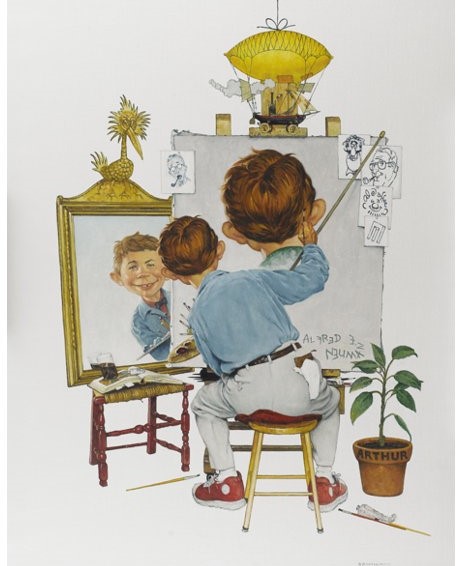
What, Me Worry? The Art and Humor of MAD Magazine at the Norman Rockwell Museum in Stockbridge, Mass., closes Sunday, the 27th, giving you eight days to get there. Stockbridge is about two hours from Boston, two-and-a-half from New York City and less than an hour from Albany.
I drove three hours to get there and it was well worth the trip. I had already been planning to go, but I shared a cab with Steve Brodner, co-curator of the exhibit, while we were at the AAEC/ACC convention in Montreal and his enthusiasm for the exhibit was infectious. Also, he paid for the cab, so there’s your graft and corruption: I can be had for the price of half a cab fare.
But you only get half a look, because I didn’t bring light stands and a tripod and plumb bob, so these pics are slightly skewed and not well-lighted and you really ought to see the original art up close and personally, because that’s the point of an art museum, after all.
Still, it’s a sample. And, as it happens, the museum and the curators of the exhibit did a bang-up job with the display cards for each piece, so I won’t have to write a whole lot.
IMPORTANT NOTE: I’ve retouched the cards to make them more legible, but I haven’t messed with the actual exhibits because I found that lightening them added off-colors that degraded rather than improving the images. You should assume they’re brighter than what you’ll see here; the matting around them is white, so correct for that and you’re good.
Which is to say once more, there’s no substitute for being there.

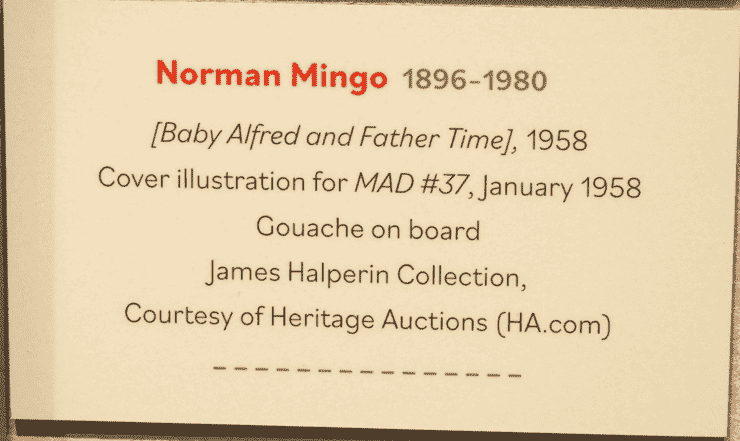
Plus I should add this disclaimer: The exhibit spans the life of the publication from 1952 onward, and it is huge, but I focused my visit on the years I was reading it myself, which started with this January, 1958 cover by Norman Mingo and, yes, little Alfred got the date wrong.

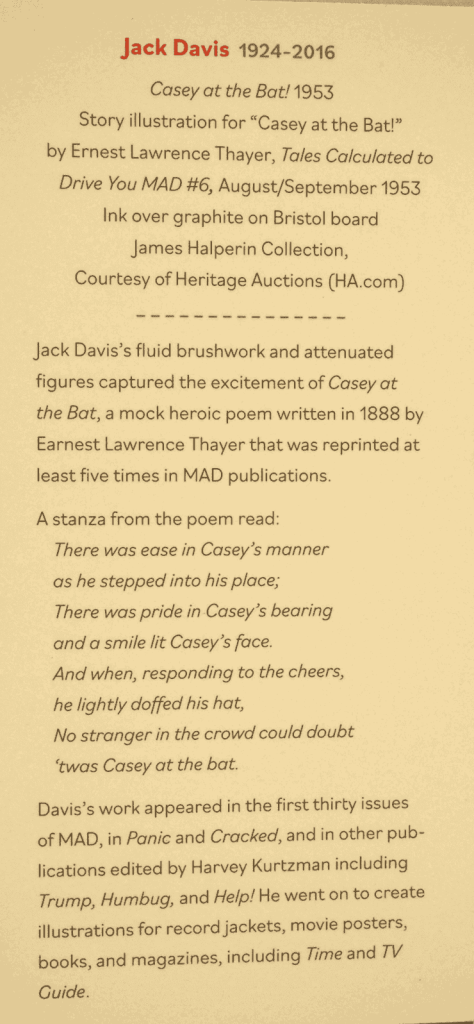
Fortunately, a lot of earlier material was included in anthologies, so this 1953 Jack Davis piece falls under the category of familiar memories.
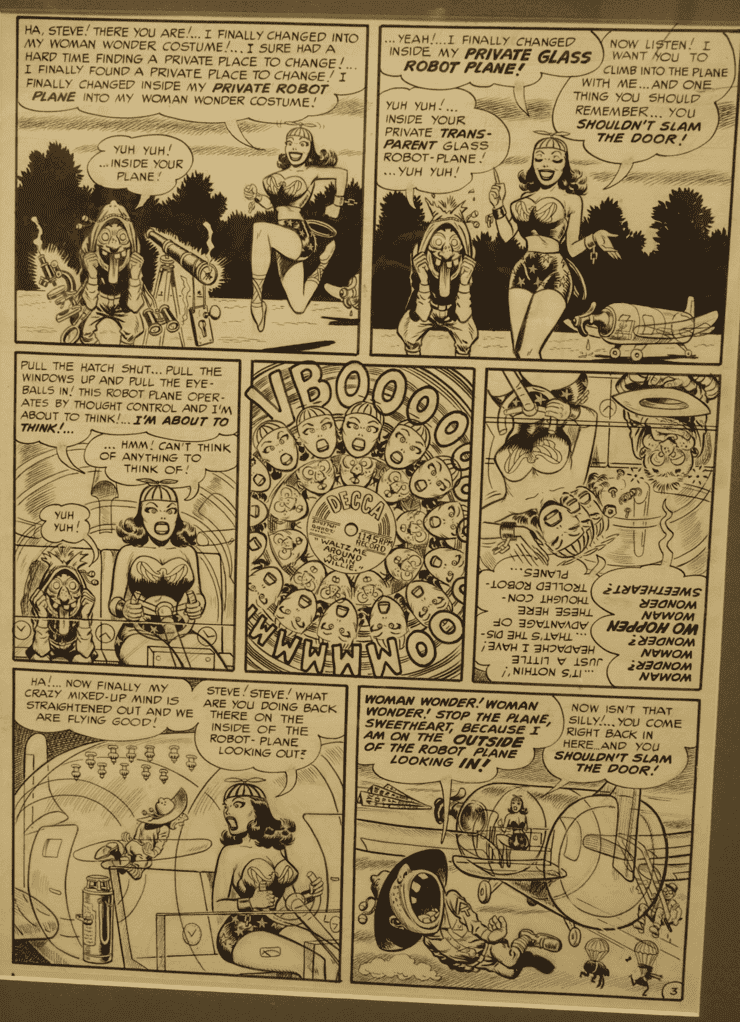

A Will Elder piece that also predates me but was in my older brother’s anthologies. And it worked well because I knew who Wonder Woman was and the gags are timeless. Incidentally, when we swapped comic books with other cabins at Camp Lord O’ The Flies, a Wonder Woman was pure one-for-one material, but a copy of Mad Magazine could be exchanged for multiple DC and Marvel comics.
Actually, once Spider Man, Thor and FF burst on the scene, most DC comics were looked on as baby stuff. But Mad was still considered beyond even the Marvel titles.

Somehow I failed to get a shot of the card for The Cane Mutiny, but it’s from the January, 1955, issue and the artist is Wally Wood. Another from the anthologies, and even though I saw it well after it ran in the magazine, I still hadn’t seen the actual movie. But it was still funny and the artwork was brilliant.

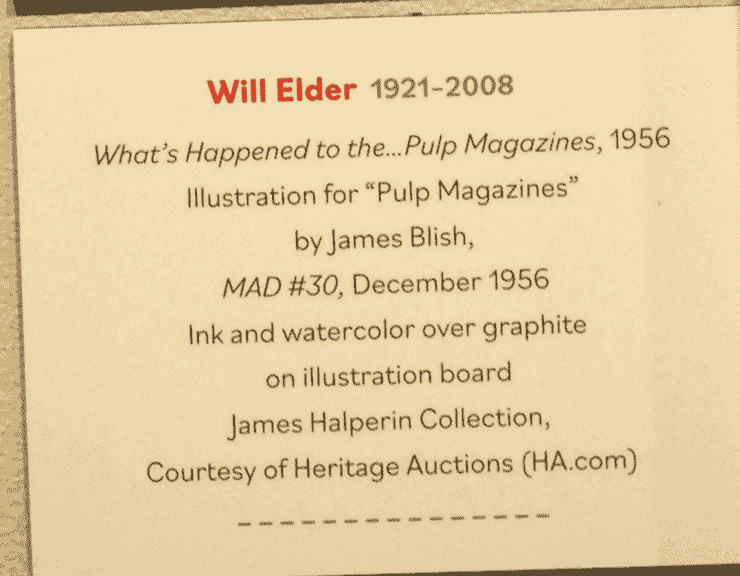
Another from before my time but in my older brother’s anthologies. Note that you can see where the typeset text was pasted over Elder’s illustration, in contrast with Davis’s Casey At The Bat, which he hand-lettered.


At 10 years old, I was pretty heavily invested in Lassie, though I’d been a Rinty loyalist until we moved to a place with no ABC affiliate — ABC being known then as the “Almost Broadcasting Company.”
However, I remember laughing at this Mort Drucker parody because it wasn’t mean-spirited and I had to admit they nailed the show pretty well.
Which probably taught me to be more critical about what I watched and read. It didn’t ruin the show for me, but it did make me more aware that it was just television and had its contrivances. No, when she raised her paw in the closing credits, she wasn’t really waving to me.
But I still tried to outdraw Matt Dillon during the opening of Gunsmoke every week.
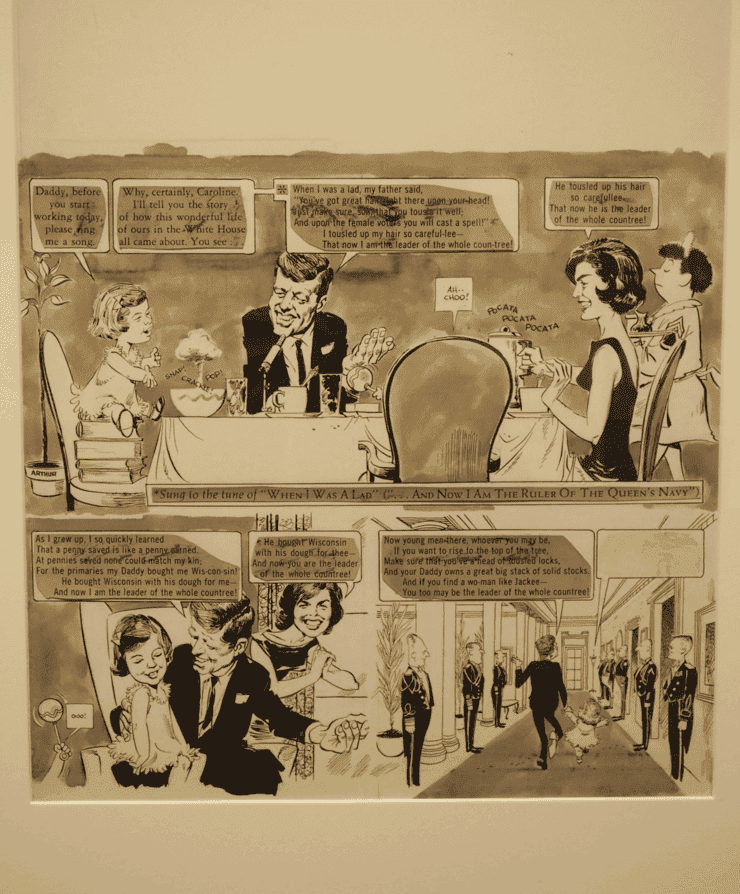

I’d point out that this parody appeared a year before Vaugh Meader released The First Family, which very gently spoofed the Kennedys and was a major hit, but was considered in poor taste by a lot of people.
And Meader didn’t crack any jokes about Joe Kennedy buying Wisconsin.
I suppose those people already thought Mad was in poor taste. So did we, but that was why we liked it.


My recollection of this one was that I wasn’t blown away by the story itself but I was impressed that Wally Wood was satirizing Dorothy Kilgallen, whom I knew from What’s My Line and who I realized had no chin. I found it hilarious that Wood had noticed that, too.


I can’t blame Frazetta for wanting to retain his rights, but it’s too bad he didn’t do more work for the magazine, because (unsurprisingly) this is good stuff.


This one is past my Mad years, but I liked Dave Berg‘s Lighter Side pieces when they first began. Didn’t find him so funny when my hair got long enough for him to make fun of, but I think he was in line with a general aura of social conservativism at the magazine. By the 70s, I was in my 20s, Mad was in competition with the National Lampoon, and the year this piece ran was the year SNL launched.
But that’s me. As said, the exhibit covers the whole schmear and your favorite years are included, whenever they were.
Until, y’know, next Sunday.
Addenda

Another one where I didn’t get a shot of the card, but how can you talk about Mad without mentioning Don Martin? There wasn’t as much of his work as I might have expected, but he’s in there.

Harvey Kurtzman is also represented, here with Mad’s #4 issue from 1953.
Plus that other guy
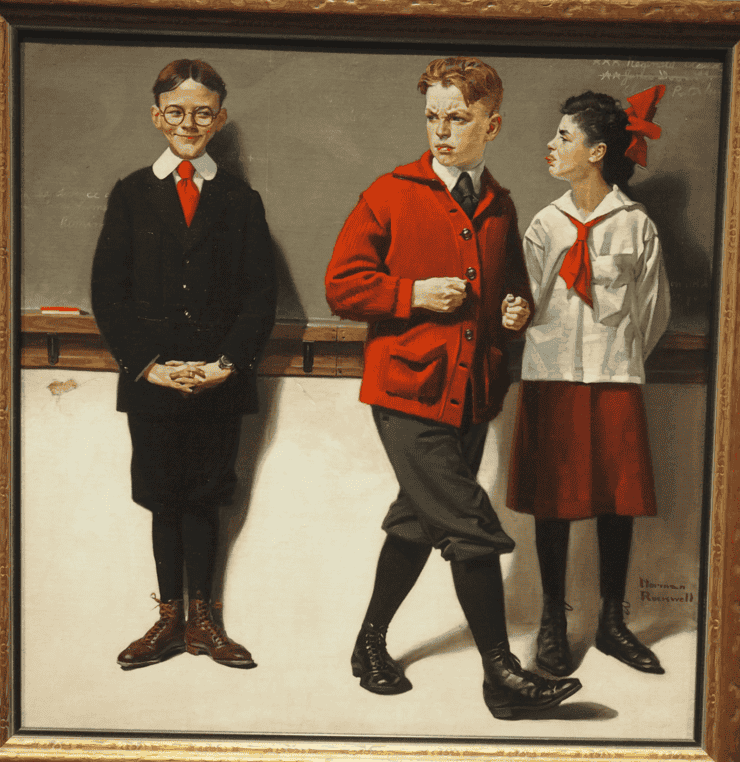

After all, it is the Norman Rockwell Museum, and if you’re too late for the Mad exhibit, it’s still a very good place to stop off and look around. Some of it is pretty funny, too, and my date was impressed that he drew such a spunky girl so very long ago.

And here’s a subversive piece that could be taken as a glorious tribute to a mighty engineering project, and it was commissioned by the Bureau of Reclamation in celebrating the Glen Canyon Dam.
But by 1969, the environmental movement was well under way, and, if the people don’t suggest a less than celebratory response to the dam, their dog sure does, as they all gaze out on a way of life that has been destroyed.
Once you see it, you can’t unsee it.
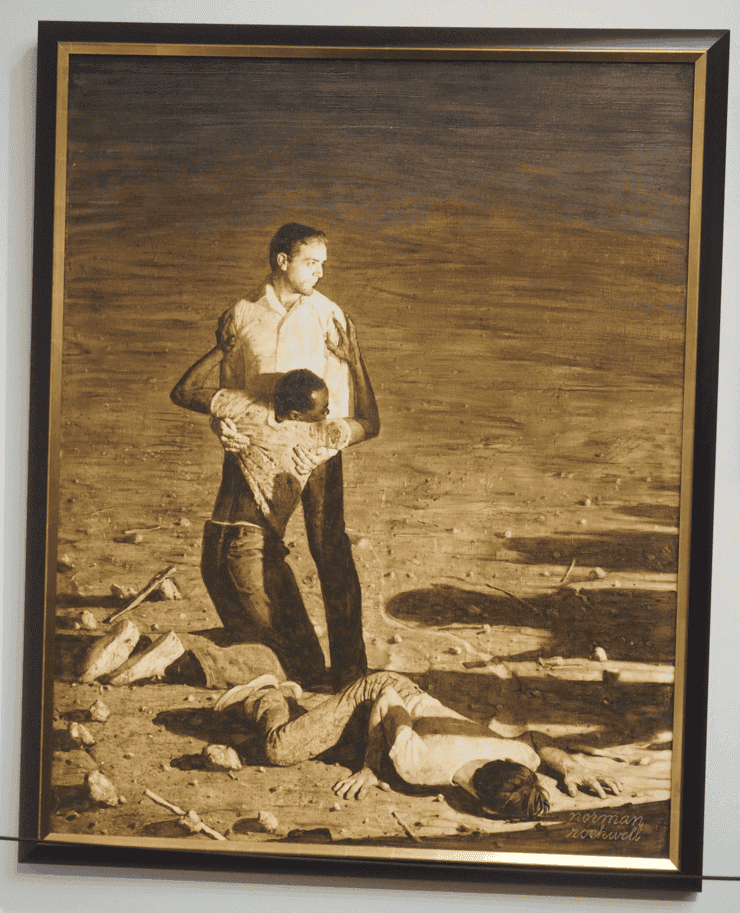

As said, it’s worth the trip just to see the breadth and depth of Rockwell’s work, from the familiar Saturday Evening Post covers to more diverse topics and approaches.
But if you can get there in time for the Mad exhibit, too, so much the better.


Comments 17
Comments are closed.